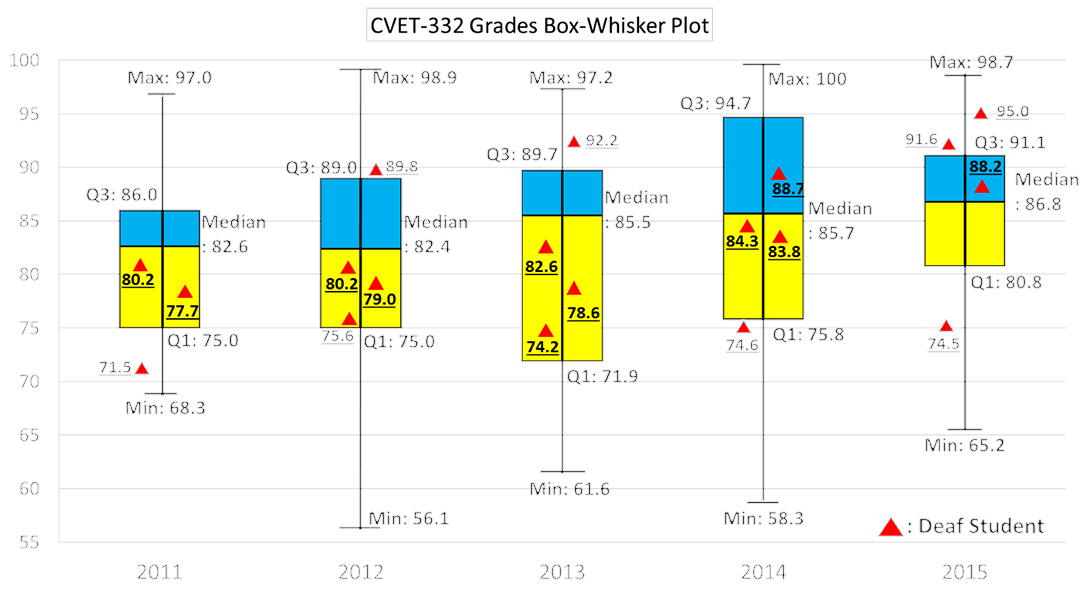Civil engineering technology students and faculty thrive in hybrid classroom environment
Combining lectures, hands-on activities and YouTube screencasts, students engage more and have higher grades
Civil engineering technology students prepare their structural model for a “shake-up” on test equipment designed to assess how buildings can withstand movement and vibrations. The project was part of a fall 2019 class in the College of Engineering Technology.
Transitioning demanding engineering classes to the online environment throughout the pandemic was a challenge, but Amanda Bao adjusted by supplementing lectures with a series of interactive and accessible materials that enhanced student learning.
The associate professor of civil engineering technology at Rochester Institute of Technology was prepared when she moved her Structural Dynamics course, required course by fourth- and fifth-year students, to Zoom and YouTube. That’s because she had been incorporating online materials to supplement coursework prior to the pandemic.
For the past five years, Bao had been studying the effect of interactive tools in her courses, first to address the need to improve learning outcomes and also to determine if the tools could better support the Deaf and hard-of-hearing students who took her classes.
Screencasts—video instruction—were developed for Bao’s Structural Dynamics class, with its focus on complex mathematics and mechanics. The series detailed concepts learned in class and provided students with more in-depth problem examples as well as insights about alternatives. Coupled with hands-on activities that could be done on or off-site, the learning package of lectures, activities, and screencasts has been shown to increase critical thinking and problem-solving abilities, Bao said, who teaches in RIT’s College of Engineering Technology.
“Screencasts appeal to this generation of technically proficient students and provide a new learning platform for both hearing and Deaf students,” she added.
Since 2012, Bao and two of her research assistants have produced 30-plus screencasts about design concepts from frame modeling to mathematical analysis of the impact of vibrations on structures. All materials are continually updated and open to the class as well as interpreters for RIT’s Deaf and hard-of-hearing students.
Bao also began to collect data from five years of coursework with the combined materials to assess learning outcomes and found consistent improvement by students and comparable, strong grades for the Deaf and hard-of-hearing students in her classes. Having additional, focused materials reinforced concepts. Some findings from Bao’s five-year study indicate:
- Deaf and hard-of-hearing students’ learning relies on the accuracy of sign-language interpreters’ real-time understanding of the course materials; access to the supplemental material provided improved interpretation and student understanding of concepts
- Median grades improved over time since the screencasts were introduced into the coursework
- Grades based on homework, midterms, and final exams showed continued improvement over time for both hearing and Deaf students
- In surveys about the screencasts, students provided positive comments about their use of, and learning from, the online materials. Some general comments included: “One of the best things made, wish all classes had these” and “The problems are much easier to understand when you can follow along with the screencast steps.”
Bao’s work in this area has been presented at regional and national conferences – and the focus has been not only about learning but accessibility.
“Implementation of different learning styles is critical to educate engineering students, and computer-assisted instruction provides opportunities for students to do something active besides transcribing notes,” she said.
Student grades in the Structural Design course over several years with average, median, and maximum grade information related to the use of online materials as supplements to in-class and laboratory work.











